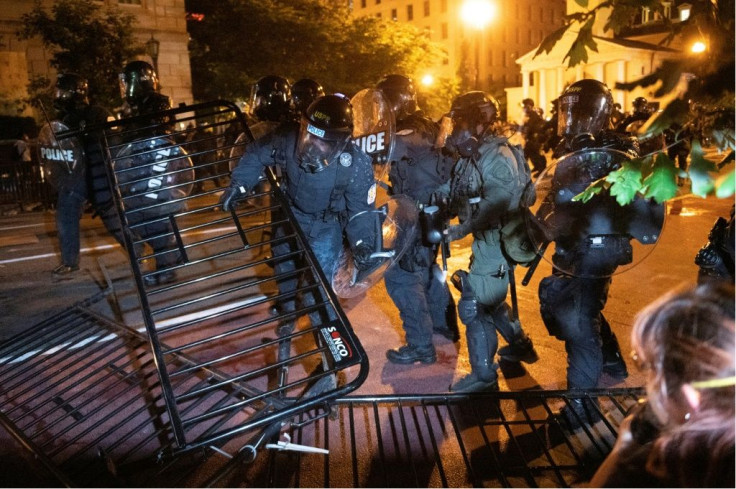George Floyd Protestors Sue Trump, Barr For 'Use Of Violence Against Peaceful Demonstrators'
KEY POINTS
- The photo-op Trump had in front of the St. John's Episcopal Church has ignited a lawsuit against him and Bill Barr
- The lawsuit, led by the ACLU, assails Trump and Barr for "ordering the use of violence against peaceful demonstrators who were speaking out against discriminatory police brutality targeted at Black people"
- The lawsuit also seeks damages for injuries sustained
Attorney General Bill Barr admitted Thursday to giving the order that allowed both civilian and military police to violently charge at and disperse peaceful demonstrators at Lafayette Square on June 1 (Monday). Scattering the non-violent demonstrators allowed President Donald Trump to do a photo-up at the nearby St. John’s Episcopal Church to bolster his claim of being “your law and order president.”
Barr, however, implicated Trump in the decision to disperse demonstrators using rubber bullets and pepper spray. He said Trump personally asked him to oversee the federal response to the protests.
The American Civil Liberties Union (ACLU) and several protestors filed a lawsuit Thursday challenging Barr’s and Trump’s use of force. The lawsuit, filed at the U.S. District Court for the District of Columbia, named Trump, Barr and other federal officials as defendants.
It alleged administration-directed police had “no legitimate basis to destroy the peaceable gathering” of people protesting the death of George Floyd. The lawsuit argued the case was about Trump and Barr “ordering the use of violence against peaceful demonstrators who were speaking out against discriminatory police brutality targeted at Black people.”
Plaintiffs included residents of Washington, D.C. and Maryland, who were present at the demonstration. The lawsuit also sought damages for injuries sustained.
On May 31, Trump blamed “Antifa-led anarchists” and “Radical Left Anarchists” for the violence without providing any proof to support his allegation. He also said the United States “will be designating Antifa as a Terrorist Organization,” which he can’t do because the country has no law allowing him to do so.
On Tuesday, Trump congratulated himself for scattering the protestors after declaring “no problems” in DC or Minneapolis on Monday night. Trump used terms like “overwhelming force” and “domination” to describe the federal response.
The ACLU lawsuit turned Trump’s words against him. It said: “For Defendants to describe their actions as ‘domination’ is telling. To dominate is to establish supremacy by subjugation of others. It is precisely such domination -- in the form of centuries of white supremacy and subjugation of Black lives -- that was the core focus of the peaceful demonstration in Lafayette Square.”

Scott Michelman, legal director of the ACLU in the District of Columbia, said Trump's "shameless, unconstitutional, unprovoked and frankly criminal attack on protesters because he disagreed with their views shakes the foundation of our nation's constitutional order".
"And when the nation's top law enforcement officer becomes complicit in the tactics of an autocrat, it chills protected speech for all of us," said Michelman to CNN.
ACLU is also filing lawsuits across the country in response to the police and military's use of force against journalists.
Bishop Mariann Budde of the Episcopal Diocese of Washington expressed outrage over Trump's and Barr's action.
Bishop Budde, who has jurisdiction over the church, said Trump desecrated holy ground with his presence. She said Trump used the Bible and her church as a prop.
"I was outraged that he felt that he had the license to do that, and that he would abuse our sacred symbols and our sacred space in that way," she said.
"He held up his Bible after speaking [an] inflammatory militarized approach to the wounds of our nation," she pointed out. "He did not pray. He did not offer a word of balm or condolence to those who are grieving. He did not seek to unify the country, but rather he used our symbols and our sacred space as a way to reinforce a message that is antithetical to everything that the person of Jesus, whom we follow, and the gospel texts that we strive to emulate ... represent."
© Copyright IBTimes 2024. All rights reserved.





















